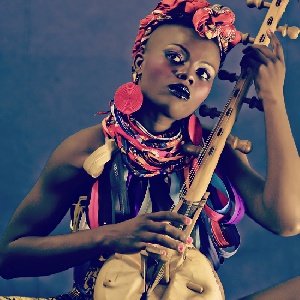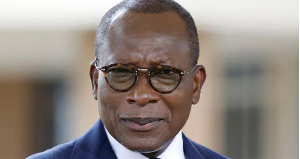Indigenous African musical and dance expressions are maintained by oral tradition and are stylistically distinct from the music and dance of both the Arabic cultures of North Africa and the Western settler populations of southern Africa. African music and dance, therefore, are cultivated largely by societies in sub-Saharan Africa.
All sub-Saharan traditions emphasise singing, because music is used as an avenue of communication. Again, many African languages are "tone languages," in which pitch level determines meaning, the melodies and rhythms of songs generally follow the intonation contour and rhythms of the song texts.
Melodies are usually organised within a scale of four, five, six, or seven tones. In group singing, some societies habitually sing in unison or in parallel octaves with sporadic fourths or fifths; others sing in two or three parts, using parallel thirds or fourths. Songs generally are in call-and-response form.
Modern Trends
With urbanisation and the impact of Western culture, traditional music and dance, although still practiced, have decreased. New idioms have emerged, however, that combine African and Western elements; they include West African highlife which originated in Ghana (showing certain Caribbean traits), Congolese popular music (reflecting Latin American influence), and in southern Africa, sabasaba and kwella (both akin to U.S. swing and jive music).
Evidence suggests that the needs of the church and other transplanted institutions may stimulate a new art music. Traditional music and dance face serious threat of decline. Because of their political and cultural importance, however, their preservation is given special attention in many countries
Musical Instruments
In the precolonial period, trade, wars, migrations, and religion stimulated interaction among sub-Saharan societies, encouraging them to borrow musical resources from one another, including peoples exposed to Islamic and Arabic culture, who had integrated some Arabic instruments and techniques into their traditional music. Some usages became concentrated in particular culture areas, whereas others were widely distributed.
Thus, the savanna belt of West Africa forms a music area distinct from the Guinea Coast because of its virtuosic instrumental styles and the presence of a class of professional praise singers, or griots, in that area.
Similarly, the music of East Africa is distinguished from that of Central Africa by a number of instruments, and from that of southern Africa, which traditionally emphasises certain kinds of choral organisation and complex forms of musical bows.
The musical instruments of sub-Saharan Africa include a wide variety of resonant solids (idiophones) such as rattles, bells, stamping tubes, the mbira (thumb piano), and the xylophone.
Parchment-head drums (membranophones) are found in many forms, such as goblet drums; kettledrums; cylindrical, semicylindrical, and barrel-shaped drums; and hourglass drums with variable-tension heads.
Among wind instruments (aerophones) are flutes made of bamboo, millet, reed, or the tips of animal horns and gourds; ocarinas; panpipes; horns (made from elephant tusks or animal horns) and trumpets (made of wood, sections of gourd, or metal tubes); single-reed pipes made from millet stalks; and double-reed pipes adopted from Arabic culture.
Stringed instruments (chordophones) include musical bows, zithers, bowed and plucked lutes, harp-lutes, arched harps, and lyres. Body percussion is also exploited, the most common being handclapping and foot stamping.
In selecting any instrument for music making or communication, consideration is given to its melodic and rhythmic capacities, its evocative or dramatic power, or its symbolic references. The tuning systems, scales, and rhythms associated with instruments tend to be more complex than those of songs.
Rhythm patterns in one line or several simultaneous lines may interlock, overlap, or form polyrhythmic structures. Such structures may utilise cross-rhythms or alternate double and triple rhythms in linear patterns.
Drums are among the more popular African instruments, but other important percussion instruments include clap-sticks, bells, rattles, slit gongs, struck gourds and clay pots, stamping tubes, and xylophones. African stringed instruments include the musical bow, lute, lyre, harp, and zither. The flute, whistle, oboe, and trumpet are among the African wind instruments.
Dance
African traditions also greatly emphasise dance, for movement is regarded as an important mode of communication. For this purpose, the dance utilises symbolic gestures, mime, props, masks, costumes, body painting, and other visual devices.
The basic movements may be simple, emphasising the upper body, torso, or feet; or they may be complex, involving coordination of different body parts and intricate actions such as fast rotation, ripples of the body, and contraction and release, as well as variations in dynamics, levels, and use of space.
The dance may be open to all, or it may be an activity in which one, two, three, or four individuals (regardless of sex) take turns in the dancing ring. Team dances also occur. The formations may be linear, circular, serpentine, or columns of two or more rows. And that is the power African music gives to the world.
Entertainment of Friday, 20 May 2016
Source: African Guide













